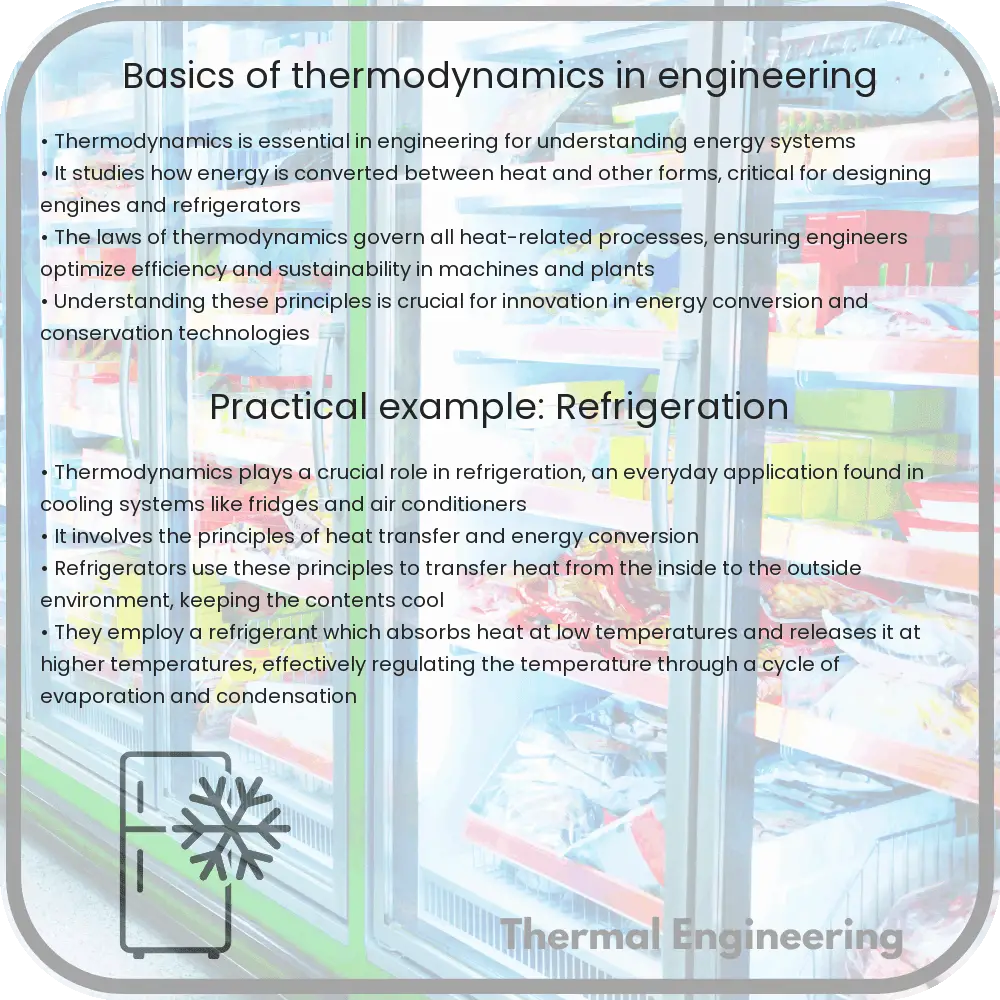This article explores thermodynamics in engineering, covering its core concepts, laws, and practical applications across various disciplines.

Understanding the Basics of Thermodynamics in Engineering
Thermodynamics is a fundamental branch of physics and engineering that describes how heat and energy are transformed and used within systems. This scientific discipline is crucial in developing efficient energy systems, engines, refrigerators, and countless other systems. In this article, we’ll explore the core concepts and laws that underpin thermodynamics in an engineering context.
Core Concepts of Thermodynamics
At its heart, thermodynamics deals with the concepts of heat, work, temperature, and energy. Here are the basics:
- Heat (Q): Energy that is transferred between systems due to a temperature difference.
- Work (W): Energy transferred when an external force moves a body.
- Temperature (T): A measure of the average kinetic energy of the particles in a system.
- Energy (E): The capacity to do work or produce heat.
These concepts are linked by the first law of thermodynamics or the law of energy conservation, which states that energy cannot be created or destroyed in an isolated system.
The Laws of Thermodynamics
The behavior of these quantities is governed by four fundamental laws:
- The Zeroth Law of Thermodynamics: If two systems are in thermal equilibrium with a third system, they are also in equilibrium with each other. This law establishes the concept of temperature.
- The First Law of Thermodynamics: The change in internal energy of a system is equal to the heat added to the system minus the work done by the system on its surroundings. Mathematically, it’s expressed as ΔE = Q – W.
- The Second Law of Thermodynamics: Heat does not spontaneously transfer from a cooler body to a hotter one and the entropy of a closed system always increases over time. This law explains the direction of thermal processes and the concept of entropy.
- The Third Law of Thermodynamics: As the temperature of a system approaches absolute zero, the entropy of the system approaches a minimum value. This law is crucial for understanding cryogenics and absolute zero behavior.
Applications of Thermodynamics in Engineering
Thermodynamics principles are applied extensively in various fields of engineering:
- Mechanical Engineering: Design and analysis of engines, power plants, heating, ventilation, and air conditioning systems (HVAC).
- Chemical Engineering: Process design for chemical reactions, energy management in manufacturing, and material synthesis.
- Civil Engineering: Environmental control in buildings and structures, and energy efficiency in construction processes.
- Electrical Engineering: Thermodynamic analysis in the generation and transmission of electricity, and in the cooling of electrical components.
Conclusion
Understanding the basics of thermodynamics equips engineers with the necessary tools to analyze energy systems and enhance their efficiency. It provides a framework for solving complex problems in energy management, system optimization, and sustainability, which are central concerns in today’s engineering challenges. Consequently, thermodynamics not only enriches the theoretical foundation of engineering but also has extensive practical applications across various engineering disciplines.